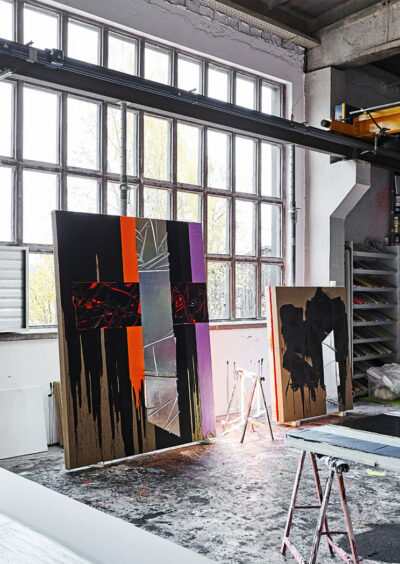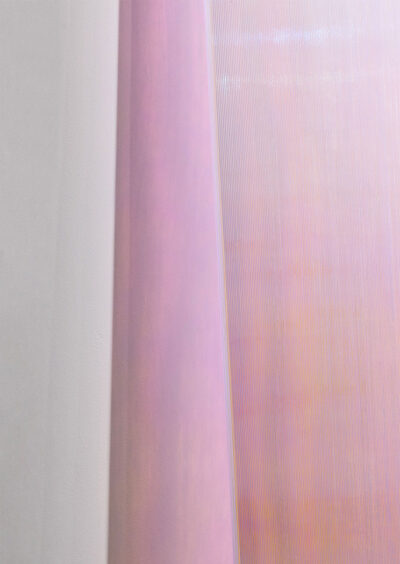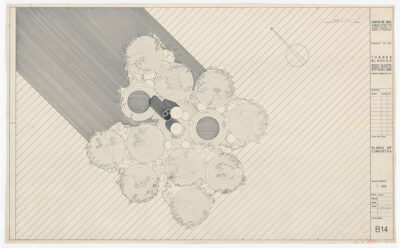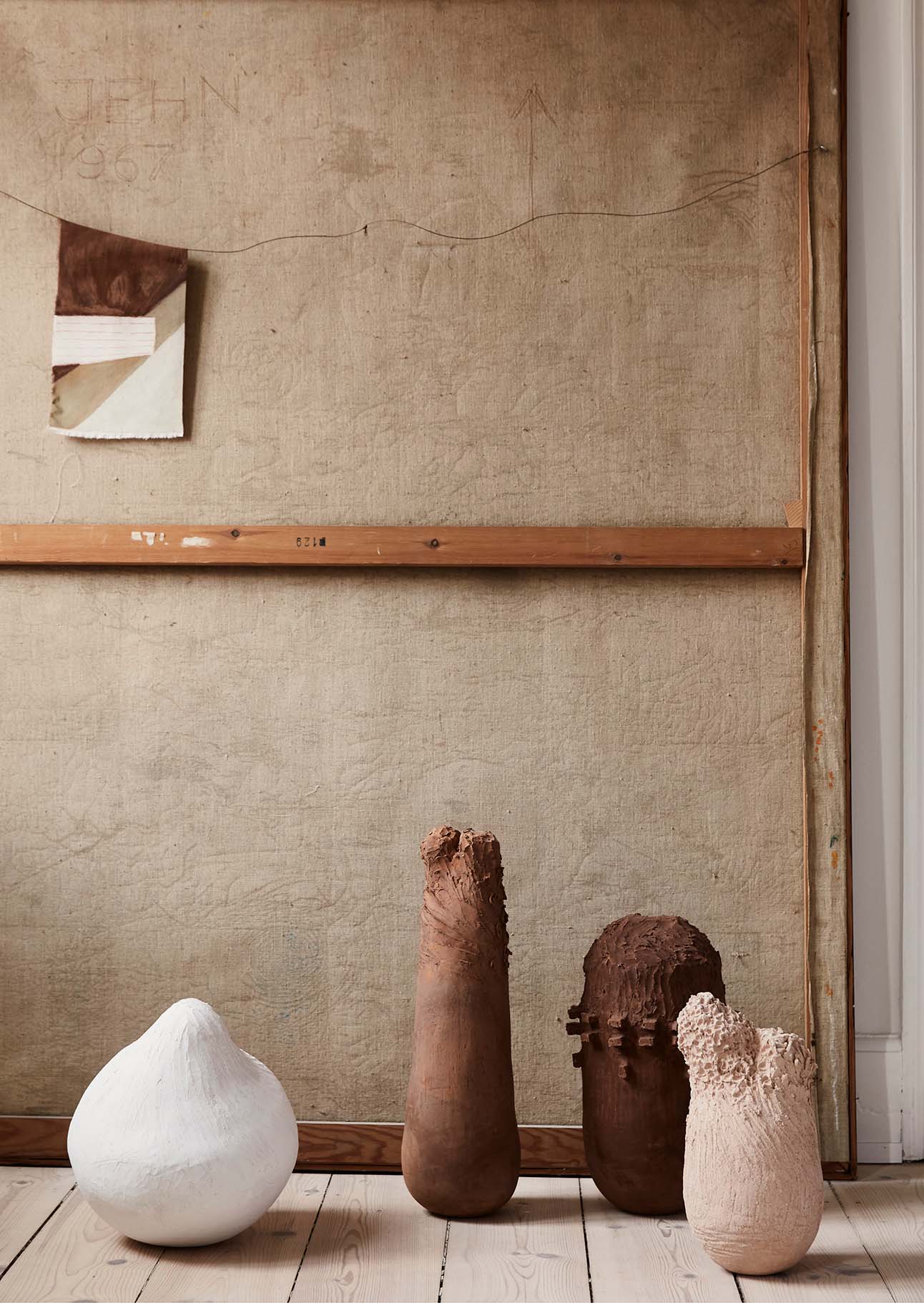
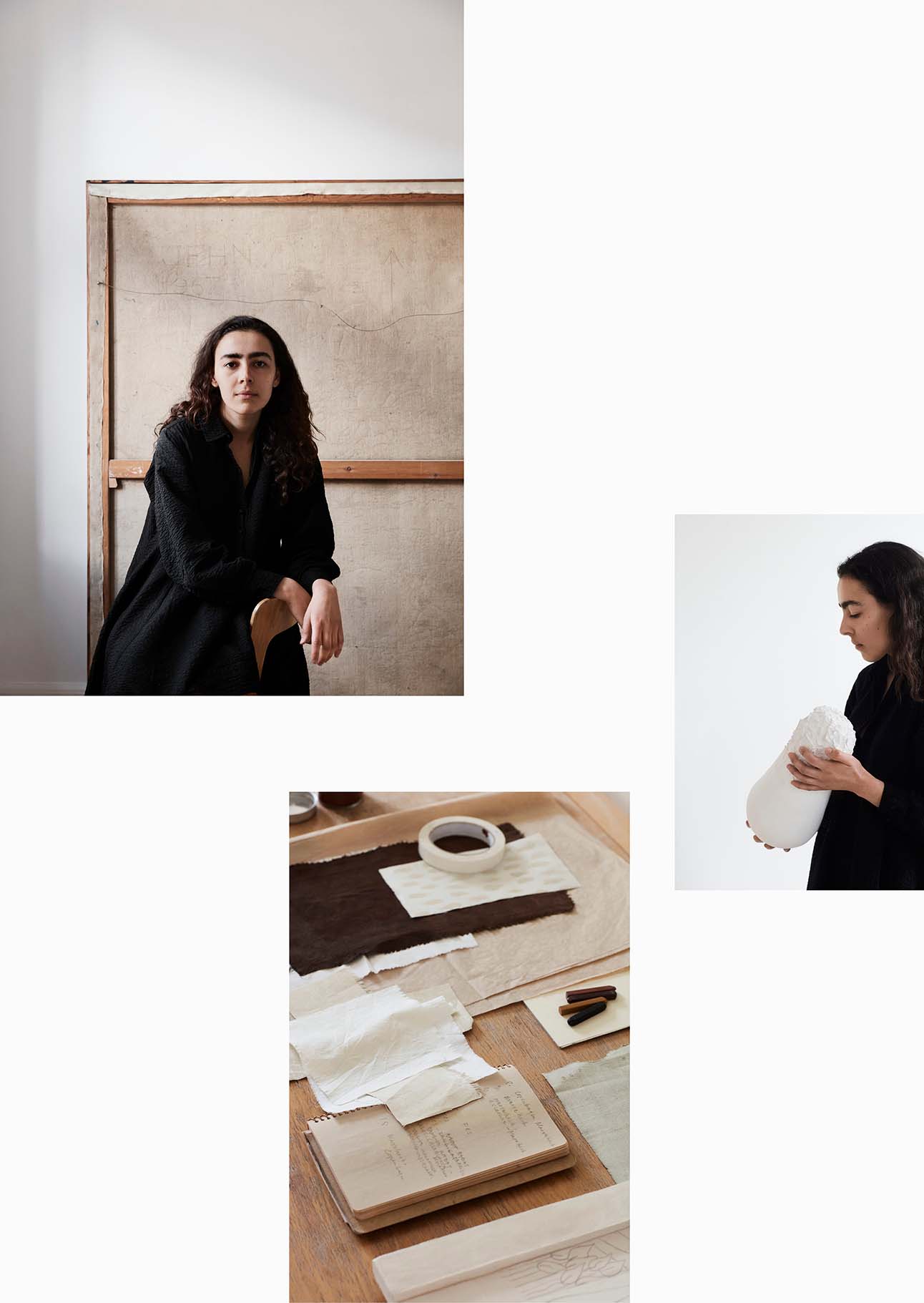
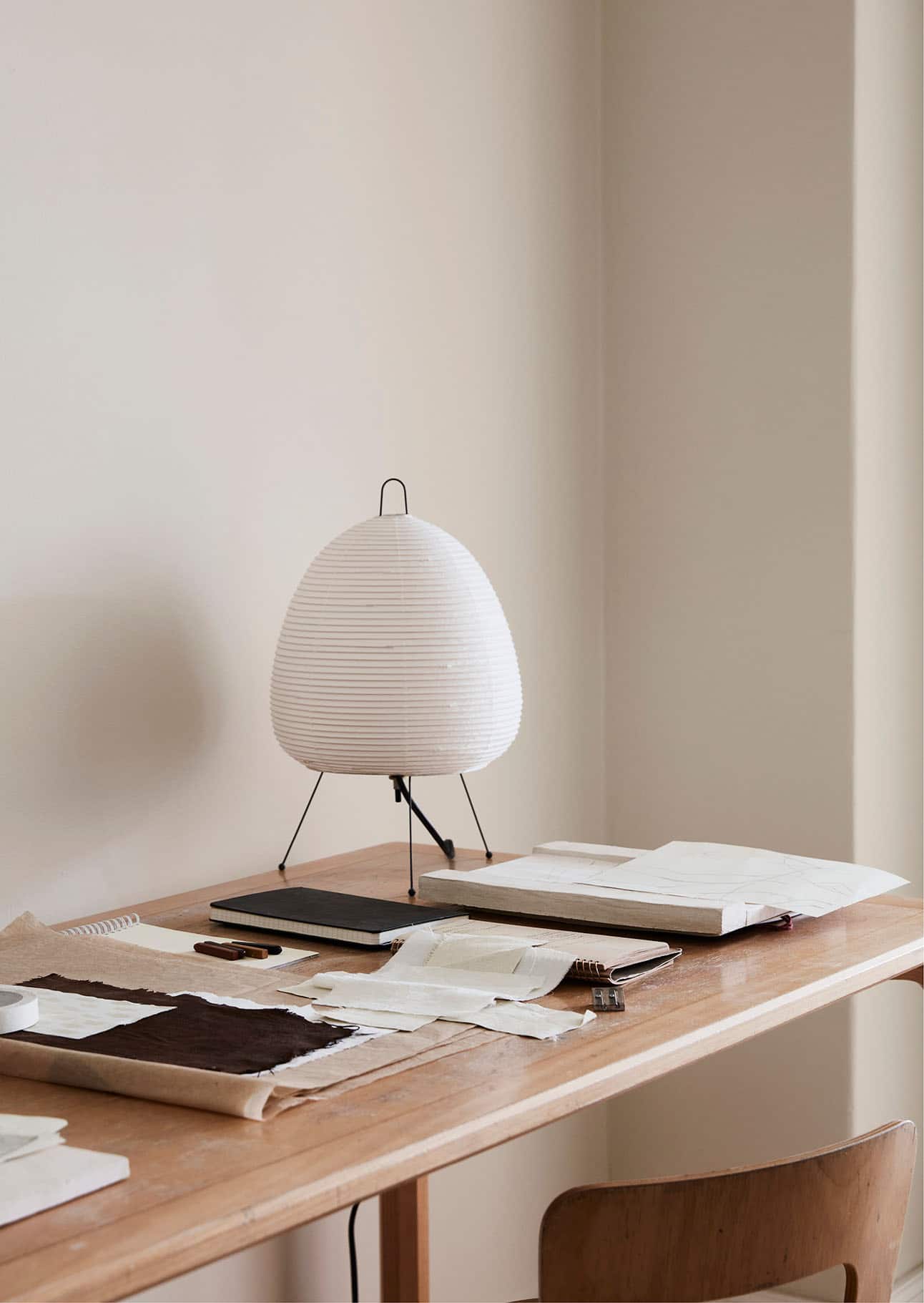
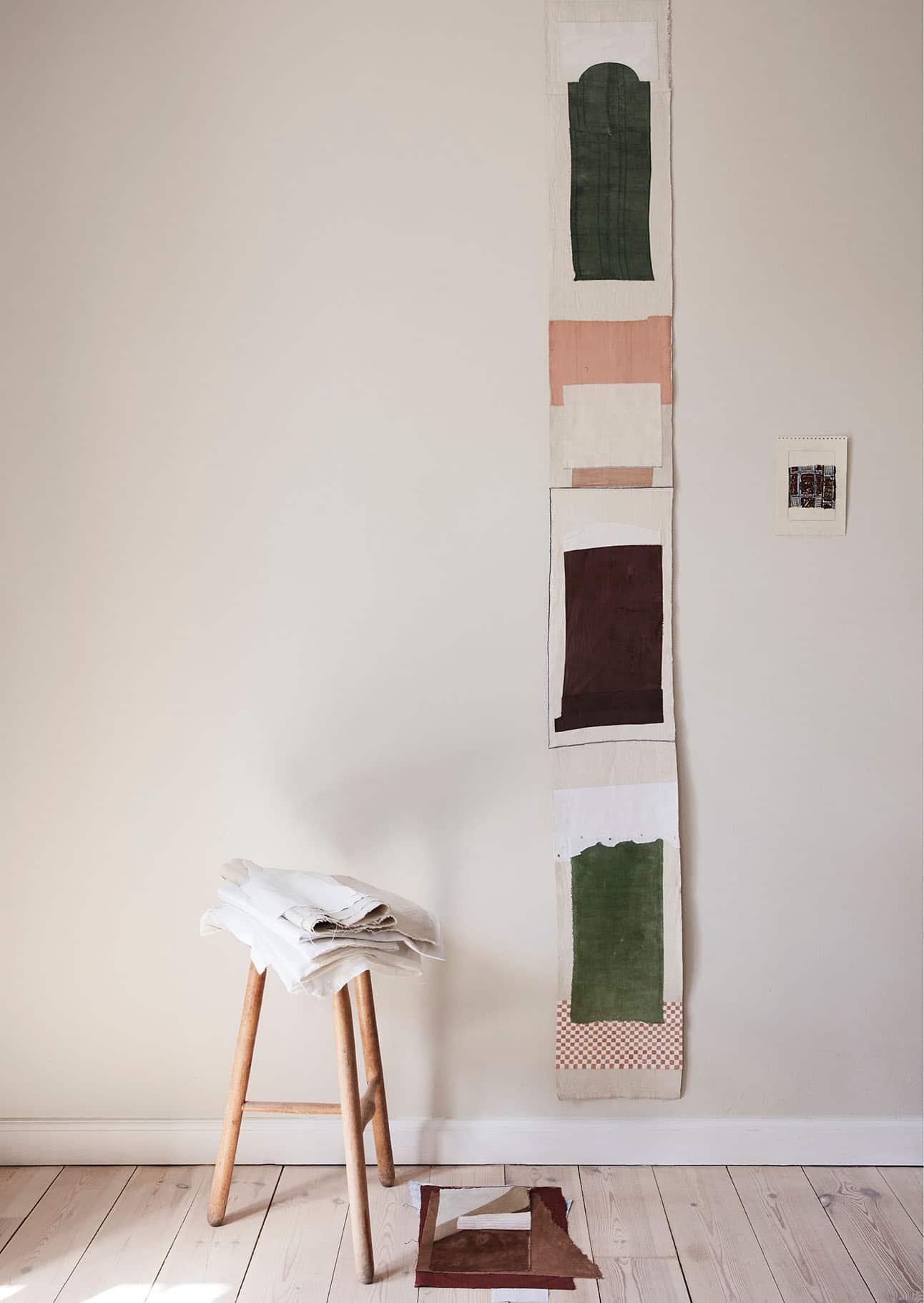
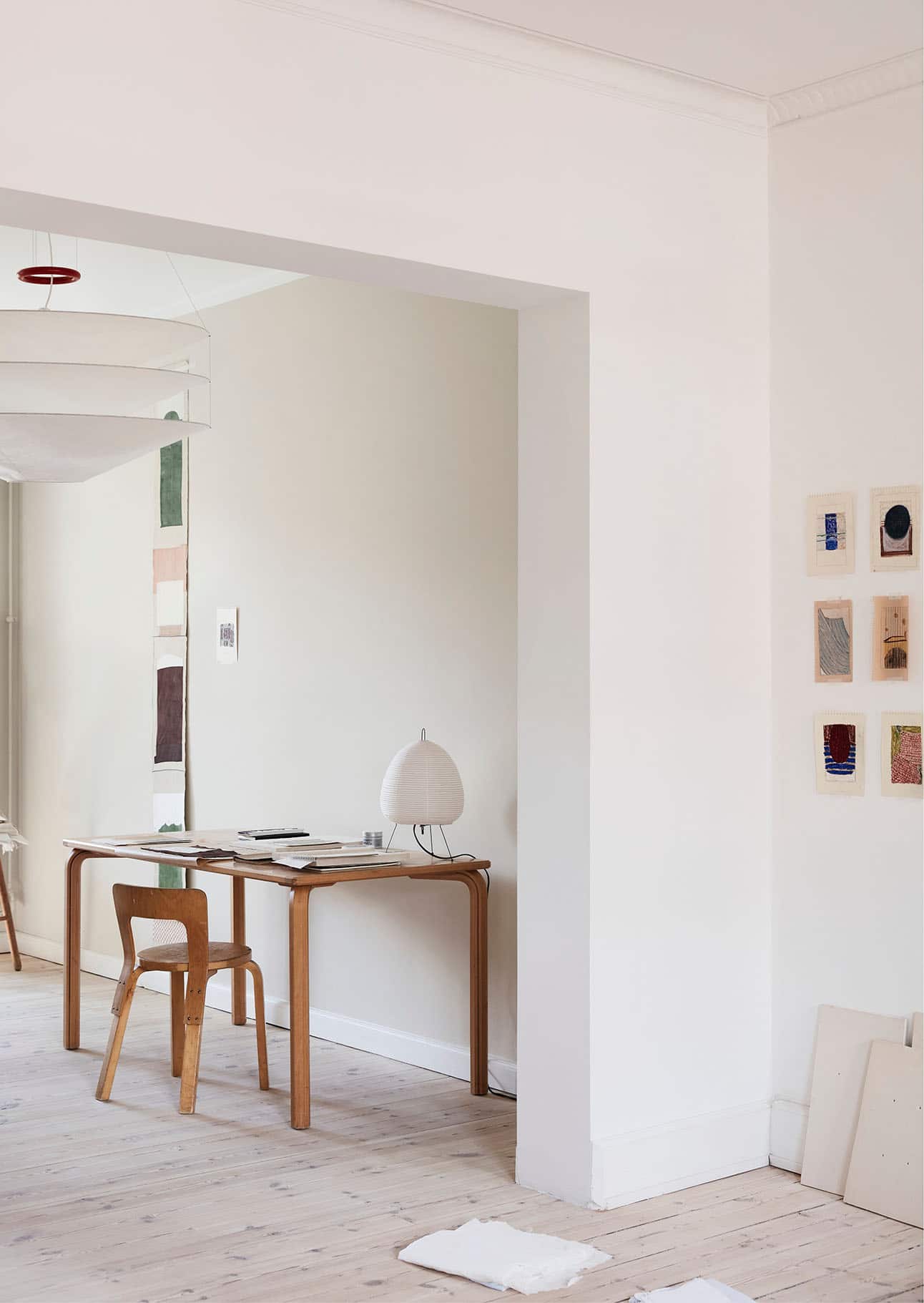
CREATIVE VOICES
— Patricia Perales García
Design
Fragments of memory and changing seasons are evoked in the ceramics and textile assemblages of Patricia Perales García as costume design crosses over with sculpture.
In a lull from her usual work as a clothing designer in London, Patricia Perales García, a native of Burgos, Spain, found clay. “I was searching for a way to evolve my practice and started making my own pigments and colours. I think that colour, tone and texture are what drives my work and my eye. I began by mixing chalk with pigment, painting my clay sculptures,” she says. She saw a new vein forming within her practice, treating her hand-coiled terracotta pots with the mind of an artist educated as a costume designer in Florence. Often, Perales García works with fragments – of memory and experience, tone and technique, material and form. Her pots and sculptures are sometimes subdued, mimicking the earthy hues of her home region, other times painted with an underglaze in a surreal yet intimate manner. They narrate stories from an upbringing and dreamlike snatches of memories; a ladder not to walk under, domestic scenes or textural surfaces reminiscent of fabric piled, all in a way reminiscent of the matte murals of ancient Pompeii. Relocating to Copenhagen shortly before lockdown last year, she set up her studio at home. Perhaps to grasp something tangible from the before, she rummaged through her own collection of textiles: antique kitchen towels, plant-dyed cloth, remnants of old clothing salvaged or exceptional handcraft found while traveling. She returned to the fragment as a theme, layering and hand-stitching pieces of these together in narrow strips, evocative of scrolls of parchment. “As I was walking back and forth in my apartment, each day the same, there was something beautiful in seeing these works in flux, changing as the days passed and the seasons changed,” she recalled. Painting some with rich natural pigment and powdery casein, she constructs several of these works simultaneously, striving to somehow record the passing of time. In a more abstract fashion, they chronicle particular shades of colour, impulsively imagined patterns, remembrance of textures and tactility. It is somehow befitting that these are hung from an ingenious ceramic construction of her own making, emblematic of a ceramic practice effortlessly interlaced with her textile work.
This story appears in Ark Journal VOL VI
STYLING PERNILLE VEST
PHOTOGRAPHY ANDERS SCHØNNEMANN
WORDS ALISA LARSEN
RE RUIN — HOME BERLIN
Building their home amid the ruins of an abandoned GDR property in east Berlin gave artist Anselm Reyle and architect Tanja Lincke the chance to rediscover the beauty of creative freedom.
MAKING THE INVISIBLE VISIBLE – ANN VERONICA JANSSENS
Growing up in Kinshasa, Ann Veronica Janssens would often watch the sunset and sunrise, specifically the deep shades of violets, yellows, pinks and reds that swept across the sky, over the nearby mountains.
FRANCISCO JAVIER SÁENZ DE OIZA’S TORRES BLANCAS
Navarra-born, Francisco Javier Sáenz De Oiza is regarded as one of the most prolific Spanish architects of the twentieth century. In the 1950s, following an unimaginative return to the neo-classical style under Generalissimo Franco, Oiza, with peers Francisco de Asis Cabrero, and Miguel Fisac, began integrating international architectural vernaculars in their search for a Spanish Modernism.

CREATIVE VOICES
— PATRICIA PERALES GARCÍA
DESIGN
Fragments of memory and changing seasons are evoked in the ceramics and textile assemblages of Patricia Perales García as costume design crosses over with sculpture.
In a lull from her usual work as a clothing designer in London, Patricia Perales García, a native of Burgos, Spain, found clay. “I was searching for a way to evolve my practice and started making my own pigments and colours. I think that colour, tone and texture are what drives my work and my eye. I began by mixing chalk with pigment, painting my clay sculptures,” she says. She saw a new vein forming within her practice, treating her hand-coiled terracotta pots with the mind of an artist educated as a costume designer in Florence. Often, Perales García works with fragments – of memory and experience, tone and technique, material and form. Her pots and sculptures are sometimes subdued, mimicking the earthy hues of her home region, other times painted with an underglaze in a surreal yet intimate manner. They narrate stories from an upbringing and dreamlike snatches of memories; a ladder not to walk under, domestic scenes or textural surfaces reminiscent of fabric piled, all in a way reminiscent of the matte murals of ancient Pompeii. Relocating to Copenhagen shortly before lockdown last year, she set up her studio at home. Perhaps to grasp something tangible from the before, she rummaged through her own collection of textiles: antique kitchen towels, plant-dyed cloth, remnants of old clothing salvaged or exceptional handcraft found while traveling. She returned to the fragment as a theme, layering and hand-stitching pieces of these together in narrow strips, evocative of scrolls of parchment. “As I was walking back and forth in my apartment, each day the same, there was something beautiful in seeing these works in flux, changing as the days passed and the seasons changed,” she recalled. Painting some with rich natural pigment and powdery casein, she constructs several of these works simultaneously, striving to somehow record the passing of time. In a more abstract fashion, they chronicle particular shades of colour, impulsively imagined patterns, remembrance of textures and tactility. It is somehow befitting that these are hung from an ingenious ceramic construction of her own making, emblematic of a ceramic practice effortlessly interlaced with her textile work.
This story appears in Ark Journal VOL VI
STYLING PERNILLE VEST
PHOTOGRAPHY ANDERS SCHØNNEMANN
WORDS ALISA LARSEN




